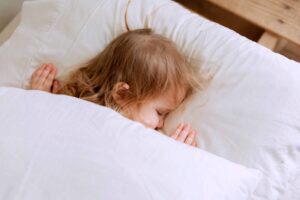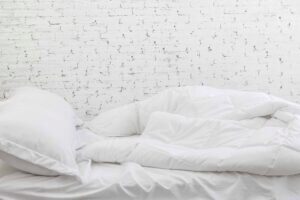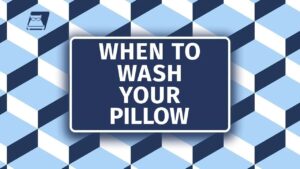Natural Product Guide For Bedroom
Disclosure: By clicking on the product links in this article, Mattress Nerd may receive a commission fee at no cost to you, the reader. Read full disclosure statement.
We think of our bedrooms as our safe haven — a place we can feel safe and comfortable, away from outdoor allergens and pollutants. But just how safe are our bedrooms? Some environmental researchers would say, they are not very safe at all.
On average, Americans spend about 90% of their time indoors, according to the Environmental Protection Agency (EPA), and for most, a majority of that time is in our bedrooms.
Unbeknownst to us, our homes can be breeding grounds for a host of pollutants, with concentrations of allergens and toxins two to five times higher than typically found outdoors. This is due to the fact that a lot of products we trust to be safe are actually loaded with things that can make us sick, such as synthetic mattresses and bedding, air fresheners, paint, dust, and household cleaners.
The presence of these toxins can cause a range of problems from eye, nose, and throat irritation; headaches; respiratory disease; heart disease; reproductive problems, and even cancer. Poor air quality in homes has also been blamed on issues not traditionally considered to be “health-related.” These include poor school performance, low occupational productivity, and even autism.
Those at greatest risk of suffering adverse effects from these toxins include young children and infants, the elderly, and people with cardiovascular or respiratory disease. However, even young and healthy people can become sick if exposed long enough to dangerous chemicals.
Let’s take a look at some of the things in your bedroom that may be putting your health at risk, and what you can do to limit your exposure and reduce your risk of developing adverse effects.
Common Toxic Bedroom Products
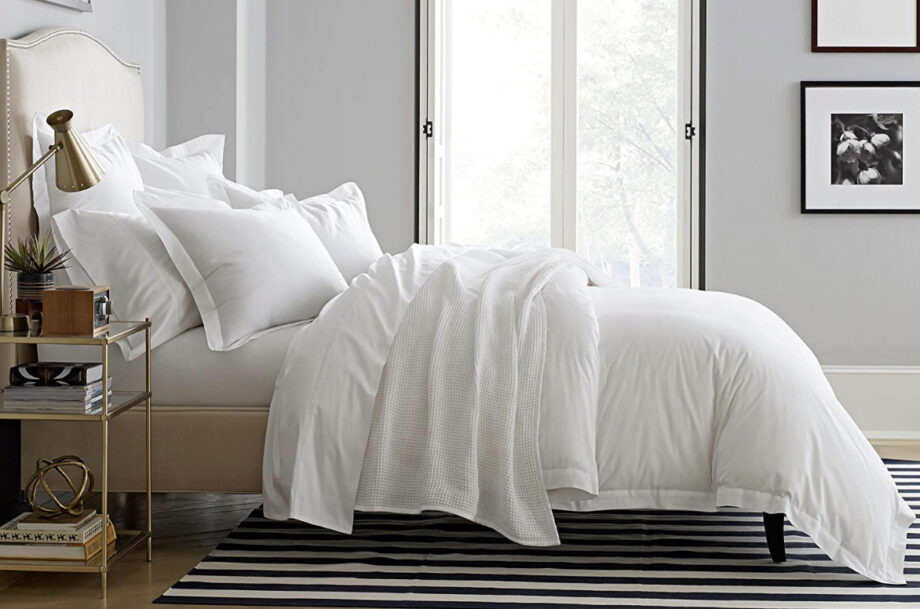
Mattress
A mattress free of toxins is one of the best purchases you can make to improve your health. After all, when you sleep, your body comes in contact with your mattress an average of eight hours a night, which adds up to be over one-third of most people’s lives.
You may be surprised to learn that many mattresses contain toxic chemicals such as polyurethane foam and other additives. Polyurethane foam can give off VOCs, short for volatile organic compounds, that are released as gases or vapors into the air. This phenomenon is known as off-gassing. This off-gassing of chemicals may give mattresses a foul odor after unboxing, which has been known to cause headaches or make you feel dizzy. Other chemicals released during off-gassing can include formaldehyde, toluene, chlorofluorocarbons (CFCs), benzene, trichloroethane, and perfluorocarbons.
The smell from off-gassing generally goes away after a few hours, but their effects can last much longer. In general, it is not considered harmful to humans, but exposure to these chemicals long-term or at high concentrations has been linked to cancers, nervous system damage, liver damage, and kidney damage.
Mattresses may also contain other ingredients of concern, including flame-retardant chemicals and PVCs. Again, the long-term health risks are considered minimal, but people with sensitivities or allergies may be at greater risk of side effects from exposure to these chemicals, such as skin rashes, eye or throat irritation, headaches, and dizziness.
Related: Best Organic Mattress
How To Deal With Toxins In Your Mattress
People who want to avoid or lessen their exposure to questionable chemicals have options when it comes to buying a safer mattress:
- Natural mattresses have fewer synthetic materials than traditional mattresses. But they may still contain VOCs, just not as high of a concentration as typical mattresses.
- Eco-friendly mattresses are designed to be less toxic to the environment. However, some materials that break down easily to benefit the earth may not offer the healthiest benefit to humans.
- Organic mattresses are the best option for people who want to avoid potentially dangerous chemicals as much as possible. Because they are made with high-quality organic materials, these mattresses are naturally hypoallergenic, antimicrobial, and protect against dust mites.
The best way to ensure that a mattress is truly organic is to look for trusted certifications from independent companies:
Global Organic Textile Standard (GOTS) is recognized around the world as a leading organic textile standard because it defines high-level environmental criteria with the entire organic textiles supply chain. The standard also requires social compliance. In order for mattresses to receive GOTS certification, they must be evaluated by an independent inspector.
OEKO-TEX Standard 100 is a more comprehensive standard that ensures that “every component of this article, i.e. every thread, button, and other accessories, has been tested for harmful substances and that the article, therefore, is harmless in human ecological terms,” the website states. The OEKO-TEX Standard 100 also regularly updates its criteria catalog to include new scientific knowledge or statutory requirements, often going beyond national and international requirements.
Greenguard Gold is the most stringent certification by UL Environment, a business unit of Underwriters Laboratories. The certification helps buyers identify products and materials that have low chemical emissions, which helps improve the quality of air in your home. In order to receive the Greenguard Gold certification, a mattress must have very low amounts of VOCs.
Candles & Air Fresheners
Scented candles and air fresheners can give bedrooms a nice, comforting fragrance. However, many aromatic fragrances in household and personal care products can cause adverse health effects such as respiratory difficulties and migraine headaches. These side effects are likely caused by VOCs such as petrochemicals and semi-VOCs, like phthalates, which can also disrupt the endocrine system and cause an over- or under-production of hormones in the body.
Even unscented candles can be considered indoor pollutants. Most candles sold in the U.S. are made with paraffin wax, also a derivative of petroleum. According to a study conducted by researchers at South Carolina State University, burning unscented and undyed candles can release dangerous chemicals, including benzene, toluene, ketones, and other gasoline components, which have been linked to cancer, asthma, and birth defects.
What Should You Do About Toxins In Your Candles and Air Fresheners?
If it’s a fragrance you want, consider mixing essential oils with distilled water in a spray bottle, or investing in a diffuser. Essential oils are derived from plants and are considered all-natural. However, some essential oils are altered by adding synthetic chemicals or other ingredients that could pose health risks-so make sure you do your research! Look for essential oils labeled as pure from reputable sellers, and limit inhalation exposure to no more than 15 minutes per hour.
If it’s the ambiance you want from candles, try unscented vegetable-based candles or beeswax candles. The former was included in the SC State University study and found not to release any pollutants. Pure beeswax candles are naturally smokeless and do not contain chemical fragrances, but do release subtle scents due to the nectar and honey naturally stored in the honeycomb, and will give you the soft glow you may miss form your candles.
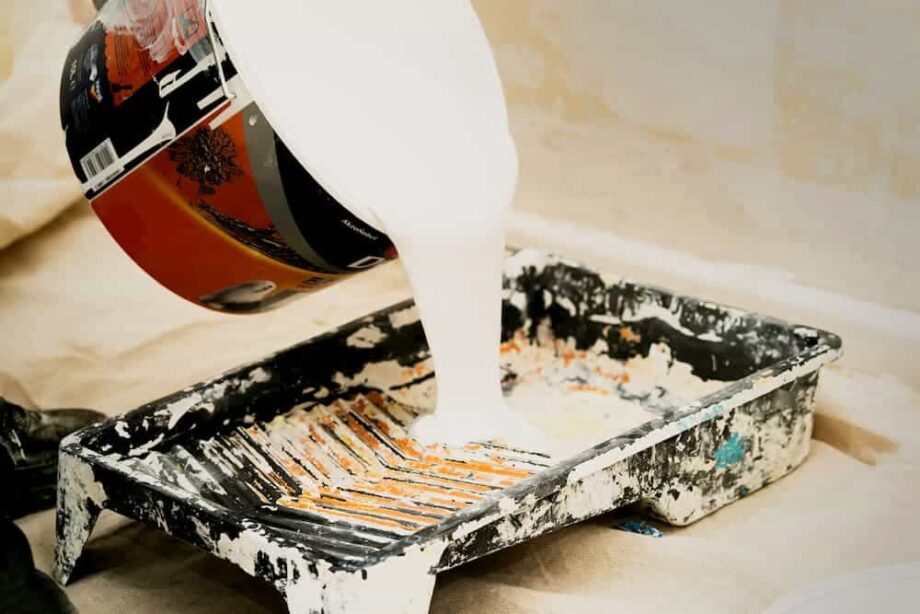
Paint
It’s not uncommon for a fresh coat of paint to release odors, but paint can also emit those nasty, potentially harmful, VOCs. Chemicals released can cause short-term health problems including headaches, dizziness, runny nose, and itchy eyes. But they can also cause long-term issues. According to a study published in the journal Plos One, researchers tested VOC levels in children’s bedrooms after painting, and found they contained higher levels of propylene glycol and glycol ethers, two VOCs that made the children vulnerable to conditions such as asthma, eczema, and rhinitis.
A 2018 study published in Neurology found that people exposed to organic solvents used in paints, varnishes, lacquers, adhesives, and glue, were more likely to develop developing multiple sclerosis (MS). Researchers noted that those with longer exposure were at a greater risk of developing MS.
Paint fumes can be especially concerning for pregnant women. A recent study published in the journal Occupational & Environmental Medicine found that women exposed to paint chemicals while pregnant were more likely to have a child with an autism spectrum disorder. Previous studies have also hinted at this heightened autism risk. Pregnant women exposed to paint fumes are also at risk for delivering a baby with low birth weight, a condition that puts them at greater risk for developmental delays and learning disabilities.
One VOC found in some paints, particularly oil-based paints, is benzene, a known carcinogen. Long-term exposure to benzene is linked to cases of acute myeloid leukemia and other blood and lymphatic cancers.
If your home was built before 1978 there is a good chance it may contain lead-based paint, which is especially toxic if the paint is peeling or chipped. Extra precaution should be used when performing home improvement projects that expose you to lead paint. Exposure to lead paint can lead to lead poisoning, which can cause a wide range of health problems. Lead exposure is especially dangerous to young children, who absorb lead four to five times more readily than adults and are at greater risk for long-term effects.
Dealing With Toxic Paint
If you’re planning to paint your bedroom and you want to reduce your exposure to VOCs, ventilate the space by opening windows and doors and using fans to bring in outdoor air. If you can’t adequately ventilate the space, try using a respirator to lower the risk of exposure to paint fumes, and take frequent fresh air brakes. If you can, leave the windows open for a few days to thoroughly air out the room. And when you’re finished painting, close all paint containers tightly to prevent vapors from escaping, and store them outside the home, if possible.
Low- or no-VOC paint options are available but they are generally more expensive. You can find the amount of VOCs on the paint can label. The federal government caps VOC levels at 250 grams per liter for flat finishes and 380 for glossy finishes. Some states, like historically health-conscious California, have stricter limits. Essentially, the lower the number, the lower the VOC level.
Consult with a contractor if you want to remove or paint over lead paint.

Rugs & Carpet
That oriental rug or shag carpeting on your floor may be stunning, but it’s likely harboring all sorts of dust and allergens. A study published in the International Journal of Environmental Research and Public Health found that carpet is loaded with an assortment of particles that can cause respiratory problems and infections, asthma, headaches, and fatigue. Those nasty dust particles in your rug can also float back into the air while you’re walking on them, playing on them, or vacuuming.
Even the most dust-free rugs and carpets can pose risks if they contain synthetic carpet fibers, adhesives, padding, or chemical treatments and cleaners that can emit those nasty VOCs, which have been linked to a host of health effects.
What To Do About Toxins In Your Rugs & Carpet?
If you don’t want to give up your carpet or rug, consider replacing it with one made from natural and sustainable fibers. Some examples include wool, or natural plant materials like sisal, cotton, seagrass, jute, silk, and coir. Also, try using adhesives and padding with lower VOC emissions, and avoid carpets and rugs with stain or waterproofing treatments.
Additionally, removing your shoes when you go indoors will help prevent tracking allergens and pollutants inside. Using a HEPA filter when you vacuum can also be helpful. HEPA filters, short for High Energy Particulate Air, are specially designed to effectively capture very fine particles of dust, pollen, mold, bacteria, and other pollutants. It also helps to clean frequently, and replace your rugs every so often.
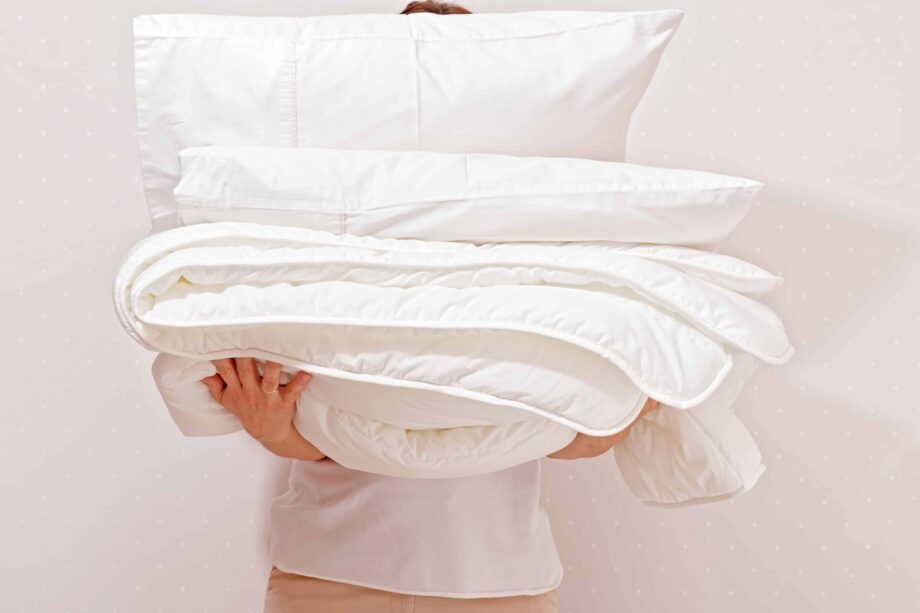
Bedding & Detergent
Lurking inside your bedding and sheets is a virtual city of contaminants made up of bacteria, fungi, and allergens. When you toss and turn at night, you could be sending them into the air and breathing them in. The best way to keep these contaminants at a minimum is to wash your bedding with detergent at least once a week in hot water.
It is also worth noting that the detergent you’re using could put your health in jeopardy, too. Detergent contains high concentrations of harsh chemicals, dyes and fragrances that can trigger skin reactions and conditions like contact dermatitis. This can be particularly irritating for people who have a history of eczema or skin allergies.
Even more concerning are the scented detergents, fabric softeners, and dryer sheets, which can emit those nasty VOCs, and cause more serious health concerns.
How Should You Deal With Toxins In Your Bedding & Detergent?
As previously mentioned, the American Lung Association recommends you wash your sheets in hot water at least once a week to rid them of bacteria, fungi, and other allergens. Use detergents free of dyes or fragrance or, better yet, try vegetable-based or eco-friendly laundry detergents. If you’re industrious, try making your own homemade laundry soaps by combining safe ingredients such as baking soda, washing soda, and vegetable-based castile soap. If you must have fragrance, try adding a few drops of essential oil, but make sure it’s pure and free of synthetic chemicals.

Pillows
Most people spend hours at night with their heads buried in their pillows. But, like bed linens, they can harbor a host of dirt, oils, skin cells, dust mites, bacteria, and even fungi. These allergens can build up over time if you don’t regularly wash or cover your pillows. When you breathe them in, these allergens can exacerbate allergies, asthma, and skin conditions.
If your pillow is made from synthetic materials, like memory foam, it may also be emitting VOCs, which can disrupt your hormones, cause allergies, and lead to serious health problems.
What To Do About Toxins In Your Pillow?
Pillows are made from a variety of materials:
- Foam pillows are made with synthetic materials and thus can contain VOCs. If you love the sinking feeling of a memory foam pillow, look for ones certified as organic and thus free from harmful chemicals and lower in VOC emissions.
- Latex pillows are more natural and typically contain fewer chemicals than memory foam. But you’ll want to be sure your latex pillow is certified organic as well.
- Down- and feather-filled pillows from trusted brands are generally clean and free of chemicals. But they do need to be cleaned regularly and thoroughly.
- Hypoallergic pillows may help with your allergies, but they are made with form and polyester fibers and should be avoided. While durable and easy to clean, they can contain dangerous chemicals like formaldehyde, benzene, and toluene.

Dust
Dust builds up on your dresser, bedside table, and floors, reminding you that it’s time to clean. But dust is more than a nuisance. It is a collection of sloughed-off skin cells, hair, clothing fibers, bacteria, dust mites, dead bug bits, soil, pollen, and tiny pieces of plastic. And, because it is lightweight, it can easily be kicked back up and float in the air, visible when the sun sends beams through your window.
Dust is just gross, and it can be detrimental to your health as well. According to a study published in Environmental Science & Technology, 90% of homes across the country contain dust loaded with various toxic chemicals. Among the most common were phthalates (an endocrine disruptor) and flame-retardant chemicals (some of which can adversely affect the reproductive system and nervous system, or increase the risk of cancer).
What To Do About Dust In Your Bedroom?
Dusting furniture and vacuuming floors is one way to remove dust from your bedroom. But consider stepping up your game by dusting with a microfiber cloth, which can trap dust and dirt inside, and vacuuming with a HEPA filter, to capture very tiny particles. Also, remember to wash your hands regularly in order to clean away any dust you have unwittingly come in contact with.

Cleaning Products
Cleaning is essential to ensuring your bedroom is clean. But the products you clean with may contain harsh chemicals that can be harmful to your health. Even products advertised as “green” or “natural” may not be as safe as they imply. Some products can irritate the eyes or throat, lead to allergic reactions, cause or aggravate asthma and other respiratory illnesses, and trigger headaches. They may also lead to more serious problems, like cancer.
Both ammonia and bleach are commonly used household cleaners, but they should never be used together. The gases created when these two products are combined can cause chronic breathing problems and death. Household cleaners like furniture and floor polish, rug and upholstery cleaners, and chlorine bleach, may contain VOCs and other toxic substances that can cause long-term health problems.
Switching To Non-Toxic Cleaning Products
The best way to protect yourself from the toxic effects of household cleaners is to read the labels before you buy them. Look for products with the lowest levels of VOCs, fragrances, flammable ingredients, and irritants. Keep in mind that products labeled as “natural” and “green” are not necessarily safer.
For peace of mind, check out the Environmental Protection Agency’s Safer Choice products listing for ones that meet the agency’s requirements for cleaning. Or, consider making your own household cleaners using baking soda or vinegar. And, as always, make sure the area in which you are cleaning is well ventilated by opening windows and doors or using fans. And never use household products in small, enclosed spaces.
Where Should You Begin?
It can be overwhelming to look around your bedroom and see how many things might be harming your health. Don’t avoid tackling the project. Remember, Rome wasn’t built in a day. You can tackle the detox effort gradually. Here are some steps you can take either once a week or monthly and, in time, you’ll have a safer bedroom environment for all your sweet dreams:
- Consider replacing your old mattress with a certified organic mattress made with natural materials that release fewer VOCs.
- Remove all air fresheners and candles and replace them with unscented vegetable-based or beeswax candles. Instead of air fresheners that can contain dangerous chemicals, opt for pure essential oils mixed with distilled water.
- If your room needs a fresh coat of paint, look for low- or no-VOC paint options, and allow the room to fully ventilate before sleeping in it. If your home was built before 1978, it may contain lead-based paint. You’ll want to consult with a contractor about the safest way to remove or cover lead-based paint.
- Remove bedroom rugs or carpet, which can harbor all sorts of pollutants. Or, replace them with rugs made of wool or natural plant materials.
- Wash your sheets at least weekly in hot water. Look for detergents free of dyes or fragrances, or consider vegetable-based, eco-friendly, or homemade detergents.
- Dust your room thoroughly. Use microfiber cloths on furniture, blinds, ceiling fan blades, and baseboards. Vacuum with a HEPA filter to capture the smallest particles.
- Cleaning products often contain harsh chemicals. Read all labels and look for ones with the lowest level of VOCs. Refer to the EPA’s Safer Choice products listing and clean only in well-ventilated spaces.
Do I Really Need To Use Non-Toxic Products?
It might seem like a lot of effort and expense to switch to non-toxic products, especially if you have never noticed them affecting your health. However, the increase in immune system disorders, neurological problems, chronic fatigue syndrome, various chemical sensitivities, allergies, reproductive problems, and hormonal disturbances in consumers in the U.S. and abroad suggests there may be an environmental link.
According to a study published in the British Medical Journal, “It is clear that environmental and lifestyle factors are key determinants of human disease — accounting for perhaps 75% of most cancers.”
A chemical can cause health effects when comes in contact with or enters the body — either through inhalation, ingestion, or direct contact. Exposure to some chemicals, especially at higher levels, can result in immediate health effects, such as irritated eyes and throat, headache, dizziness, vomiting, and rashes. But some chemicals, such as PCBs and lead, or VOCs like benzene, don’t cause immediate side effects but can build up in the body over months or years and result in long-term health problems, including cancer.
The safest bet is to take measures to minimize your exposure to chemicals and pollutants, especially in your home and bedroom, where you spend concentrated amounts of time.
